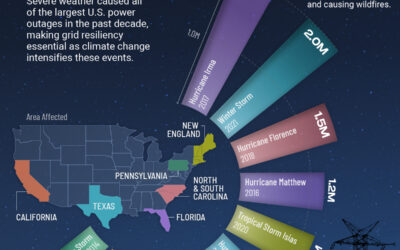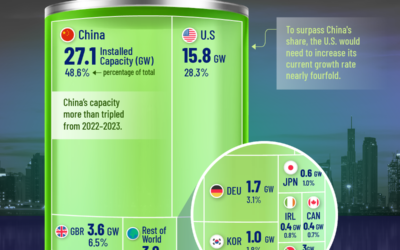Improving Processes in Unprecedented Times
I have always had a love for process improvement. Perhaps it was growing up with three siblings who I shared a bathroom with for 17 years…or the fact that I was constantly in a balancing act of trying to maintain good grades, excel at extracurricular activities, and maintain some semblance of a social life. But for as long as I can remember, I have always looked for ways to do things faster, cheaper, cleaner…ways to get better. After spending the first seven years of my working career in finance, trying to improve processes and automate along the way, I was invited to my first Kaizen event held by a consultancy group. It was inside a small meeting room with a big whiteboard, surrounded by like-minded people with hopes of reducing our manufacturing WIP—I was where I was meant to be. Immediately after, I left finance and joined the Operations Management team at the same organization. It was a 180-degree spin from my career in finance. Operations management was fast, exciting, and different every day. I joked about those of us who were part of the “can do” team. I loved every moment of it and when my family moved to San Francisco, I sought a job in consulting to help other organizations get better.
In March 2020, the COVID-19 pandemic swept through and brought us all away from our whiteboards and into our living rooms. It was probably then my husband realized my passion for process improvement when I would constantly ask him “why are you doing it that way?”. And then I had a baby—which is probably the best lesson in project management and process improvement that I’ve ever had. I could go into a whole separate blog about this (and I probably will in the future). But it was the task oriented, take life 2 hours at a time, way of living brought forth by a newborn that re-invigorated my love for process improvement. I was constantly looking for ways to do things more efficiently and MAYBE I could squeeze in four extra minutes of sleep. But I still didn’t have a whiteboard. I still wasn’t in a room with other like-minded individuals. I still couldn’t walk up to someone’s desk and say “so walk me through what it is you are doing and tell me a little bit about why you do it that way”. My Zoom and Teams workshops didn’t seem to be nearly as interactive; people weren’t as forthcoming with information and how could I tell if people were even paying attention? So, I went on a quest to find some best practices. Here is what I found that helped me run successful digital workshops and I hope it helps you as well!
Tip 1: Recruit help. There will inevitably be technical issues, and the need for a backup to maintain momentum and attention is imperative in digital workshops. It is also helpful to have members of your team in breakout rooms to provoke conversation in periods of silence.
Tip 2: Set the stage. Send out an agenda before your event. If it is lengthy, be sure to schedule sufficient break times and stick to them.
Tip 3: Break the Ice. Don’t underestimate the power of a good ice breaker. A good icebreaker will get people energized and used to talking which will be beneficial for future participation. It is also a great opportunity to learn about our colleagues. Our opportunities of water cooler chat have all but gone away, so it is nice to know things like…
- Where are you from?
- What is the best vacation you ever took?
- If you could have one food for the rest of your life what would it be?
- What is the best concert you ever went to?
Tip 4: Set the expectations. At the beginning of the meeting, let people know you will be calling on them, breaking into smaller groups, asking to screen share, etc. As a group, set ground rules for the meeting of how to communicate and show respect for one another (be engaged, no side work, no email, etc.).
Tip 5: Show your smile. This is a personal preference for many, but I personally am much more engaged when I visually see someone speaking. As the facilitator, your camera should always be on. In smaller workshops, don’t be afraid to ask people to turn on their camera. For larger groups, you may ask that they turn on their camera when speaking or for live demos
Tip 6: Screen share. Don’t be afraid to ask someone to share their screen and walk you through a process, an application, etc.
Tip 7: Break it up. Use the group breakout feature in Zoom or Teams. Assign your team members helping you out to different breakout rooms to ensure participants are staying on task. They can also let you know if there are any opportunities to change the groups for future breakouts if dynamics seem off.
Here are some helpful links to use those features:
Tip 8: Engage! In my opinion, this tip is the most important. Create an environment to foster live conversation. Call on people. Use interactive brainstorming techniques such as Round Robin or Affinity Group Brainstorming. It will keep people engaged just like when we were in the office with a tble full of markers and post-its. And often times, those who don’t voluntarily speak up have some really good things to say! Another good way to engage is through live surveys in which you can have participants answer real time on their phones or computers. I find Mentimeter easy to use with good digital aesthetics. And if you want to put your group on the spot, Kahoot has a great game-based, engaging learning platforms where participants answer questions, and it scores them on correctness and timeliness of their answers.
Tip 9: YOU CAN HAVE YOUR WHITEBOARD BACK! Microsoft has a great whiteboard feature that can be shared cross organizationally. Just ensure everyone tests it before your workshop as different organizations may have different administrator rights for downloading and utilizing add-in tools.
Tip 10: Jam Out. Play music if/when appropriate. There is nothing like a good playlist to lighten a mood and even spark conversation.
- How to Play Music on Zoom: The Right Settings to Know! (nerdschalk.com)
- Share sound from your computer in a Teams meeting or live event (microsoft.com)
So to all my project managers and problem solvers out there, dying to get back in a room with white boards on all four walls, take these tips and information and go forth! Like all workshops, even those we conducted in more “precedented times”, it can feel uncomfortable at first. But we prepare, we execute, and we get better.
By Carlye Morley
About the Author
Carlye Morley is a manager with Motive Power and specializes in leading clients through systematic project, program and financial management. Carlye is also a wife and mother of two and lives in the Bay area.
For more great articles about Project Management or if you are in need of services, visit motive-power.com to learn more.



